*NURSING > STUDY GUIDE > Advanced Medical-Surgical HESI Study Guide (All)
Advanced Medical-Surgical HESI Study Guide
Document Content and Description Below
Advanced Medical-Surgical HESI Study Guide Work Cited: All information was found in HESI book & Junior Med Surg book The difference between open & closed angle glaucoma Chronic open-angle gl... aucoma is also known as simple adult primary glaucoma and as primary open-angle glaucoma. Description: Condition characterized by increased intraocular pressure (IOP) A. Glaucoma involves gradual, painless vision loss B. Glaucoma may lead to blindness if untreated C. Glaucoma is the second leading cause of blindness in the U.S. D. There is an increased incidence in glaucoma in older adult populations E. Glaucoma usually occurs bilaterally in those who have a family history of the condition F. Aqueous fluid is inadequately drained from the eye G. It is generally asymptomatic, especially in the early stages H. It tends to be diagnosed during routine visual examinations I. It cannot be cured, but can be treated with success pharmacologically and surgically HESI HINT* Glaucoma is often painless and symptom-free. It is usually picked up as part of a regular eye examination. Nursing Assessment A. Early Signs 1. Increase in IOP >22 mm Hg 2. Decreased accommodation or ability to focus B. Late signs include: 1. Loss of peripheral vision 2. Seeing halos around lights 3. Decreased visual acuity not correctable with glasses 4. Headache or eye pain that may be so severe as to cause nausea and vomiting (Acute closedangle glaucoma) C. Risk factors include the following: 1. Family hx of glaucoma 2. Family hx of diabetes 3. Medication use and interaction of medications (e.g. glaucoma is a side effect of antihistamines, anticholinergics) Primary Open-Angle Glaucoma: is the most common type of glaucoma. The outflow of aqueous humor is decreased in the trecbecular meshwork (area of tissue in the eye located around the base of the cornea, near the ciliary body, and is responsible for draining the aqueous humor from the eye via the anterior chamber). The drainage channels become clogged like a clogged kitchen sink. Damage to the optic nerve can then result. Primary Closed-Angle Glaucoma: is due to a reduction in outflow of aqueous humor that results from angle closure. Usually this is caused by the lens bulging forward as a result of the aging process. Angle closure may also occur as a result of pupil dilation in the patient with anatomically narrow angles. It may also occur due to drug-induced myadriasis (dilation of pupil), emotional excitement, or darkness. HESI HINT* Eye drops are used to cause pupil constriction because movement of the muscles to constrict the pupil also allows aqueous humor to flow out, thereby decreasing the pressure in the eye. Pilocarpine is commonly used. Caution the client that vision may be blurred for 1-2 hours after administration of Pilocarpine and that adaptation to dark environments is difficult because of pupillary constriction (the desired effect of the drug) HESI HINT* There is an increased incidence of glaucoma in older adult populations. Older clients are prone to problems associated with constipation. Therefore, the nurse should assess these clients for constipation and postoperative complications associated with constipation and should implement a plan of care directed at prevention of, and if necessary, treatment for constipation. …. Constipation and straining at stool causes an increase in intraocular pressure (IOP)! Syndrome of Inappropriate Antidiuretic Hormone(SIADH) Rare; usually the result of an underlying condition such as Diabetes Insipidus Results from abnormally high production/release of ADH Characterized by hyponatremia and high urine specific gravity aka concentrated urine (greater 1.030). BE ALERT FOR LOW URINE OUTPUT WITH A HIGH SPECIFIC GRAVITY*** KEY ASSESSMENT What patient exhibits: Decreased urine output, edema, weight gain, thirst, dyspnea on exertion, fatigue, nausea, weakness, weight gain, headache confusion, irritablilty, coma and seizures Treatment: fluid restriction 800-1000 mL/day; decreased Na diet (salty foods will cause pt to be thirsty so look out!) Weigh patient daily to monitor changes in fluid balance, and the use of ice chips and sugarless gum help decrease thirst Hyperthyroidism(Graves Disease, Goiter) Description: Excessive activity of the thyroid gland, resulting in an elevated level of circulating thyroid hormones. Possibly long-term or lifelong treatment. A. Hyperthyroidism can result from a primary disease state; from the use of replacement hormone therapy; or from excess thyroid stimulating hormone (TSH) being produced by an anterior pituitary tumor. [Show More]
Last updated: 2 years ago
Preview 1 out of 24 pages
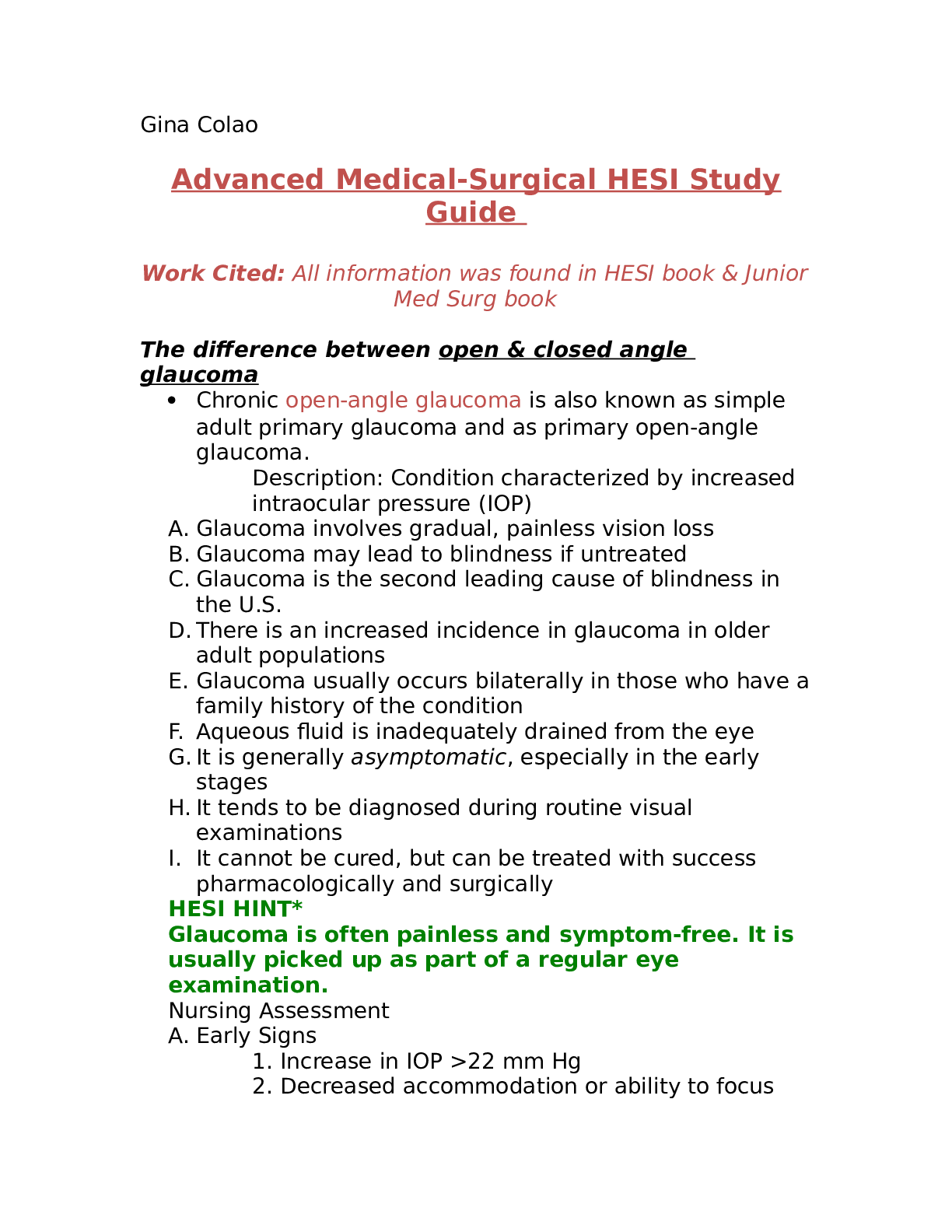
Buy this document to get the full access instantly
Instant Download Access after purchase
Buy NowInstant download
We Accept:

Reviews( 0 )
$9.00
Can't find what you want? Try our AI powered Search
Document information
Connected school, study & course
About the document
Uploaded On
Jun 04, 2021
Number of pages
24
Written in
Additional information
This document has been written for:
Uploaded
Jun 04, 2021
Downloads
0
Views
49


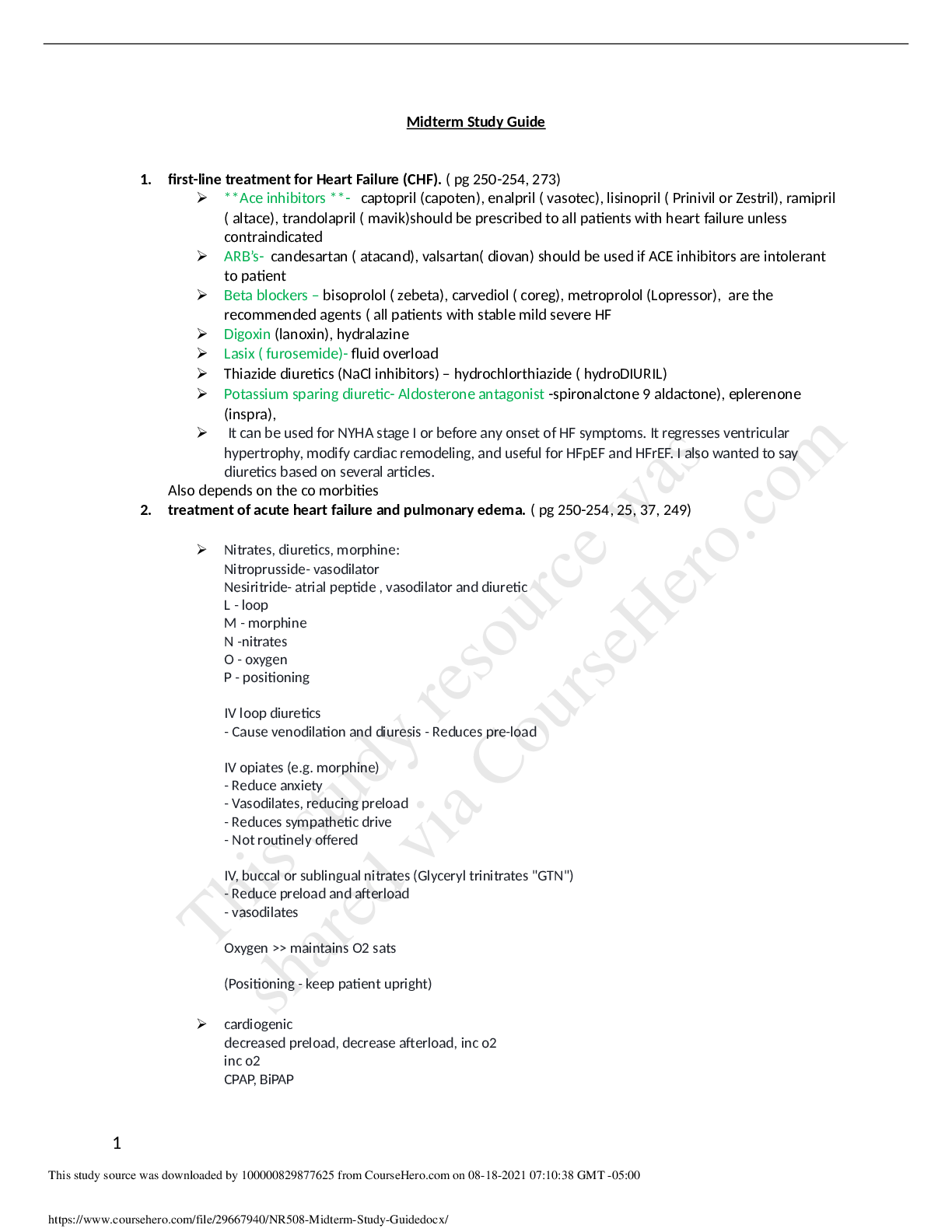
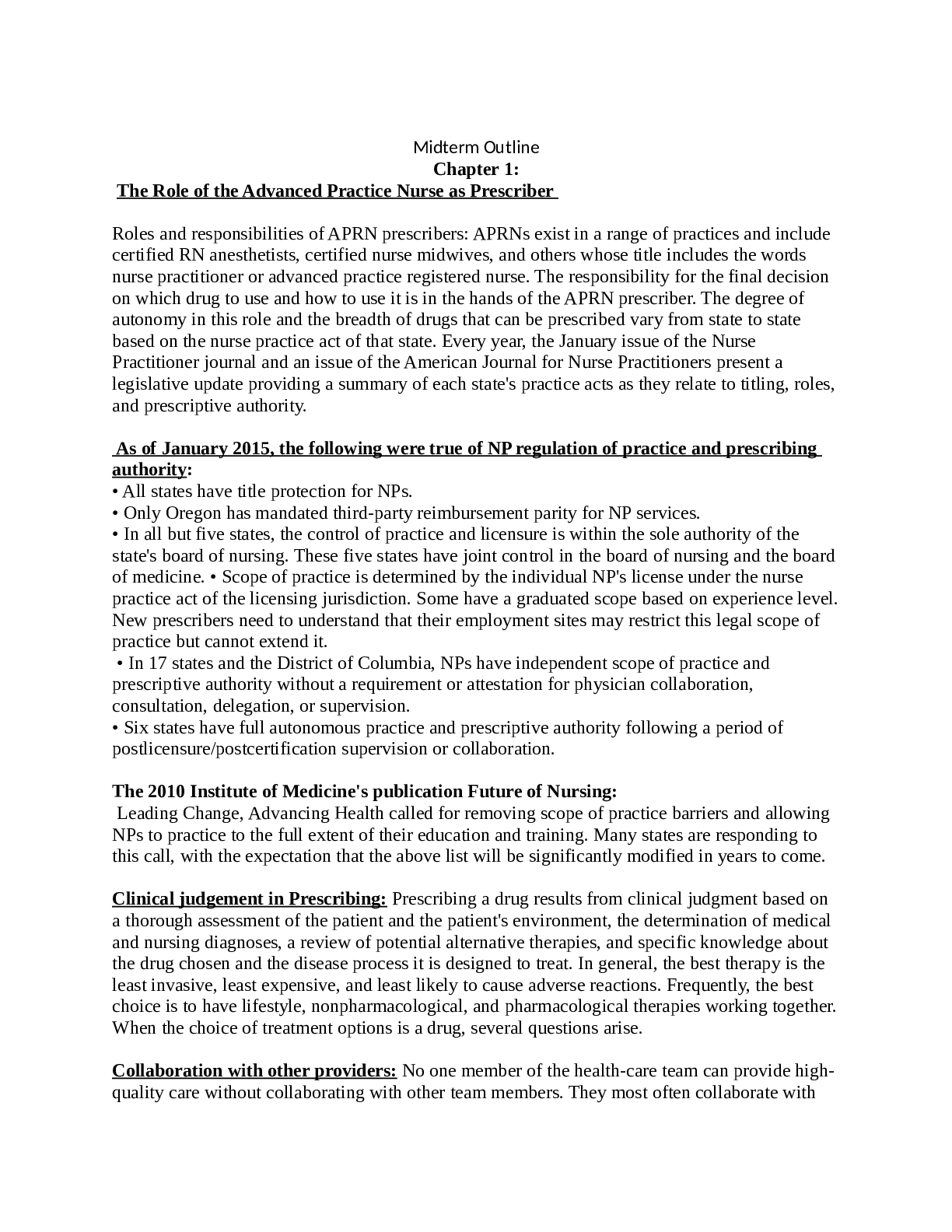
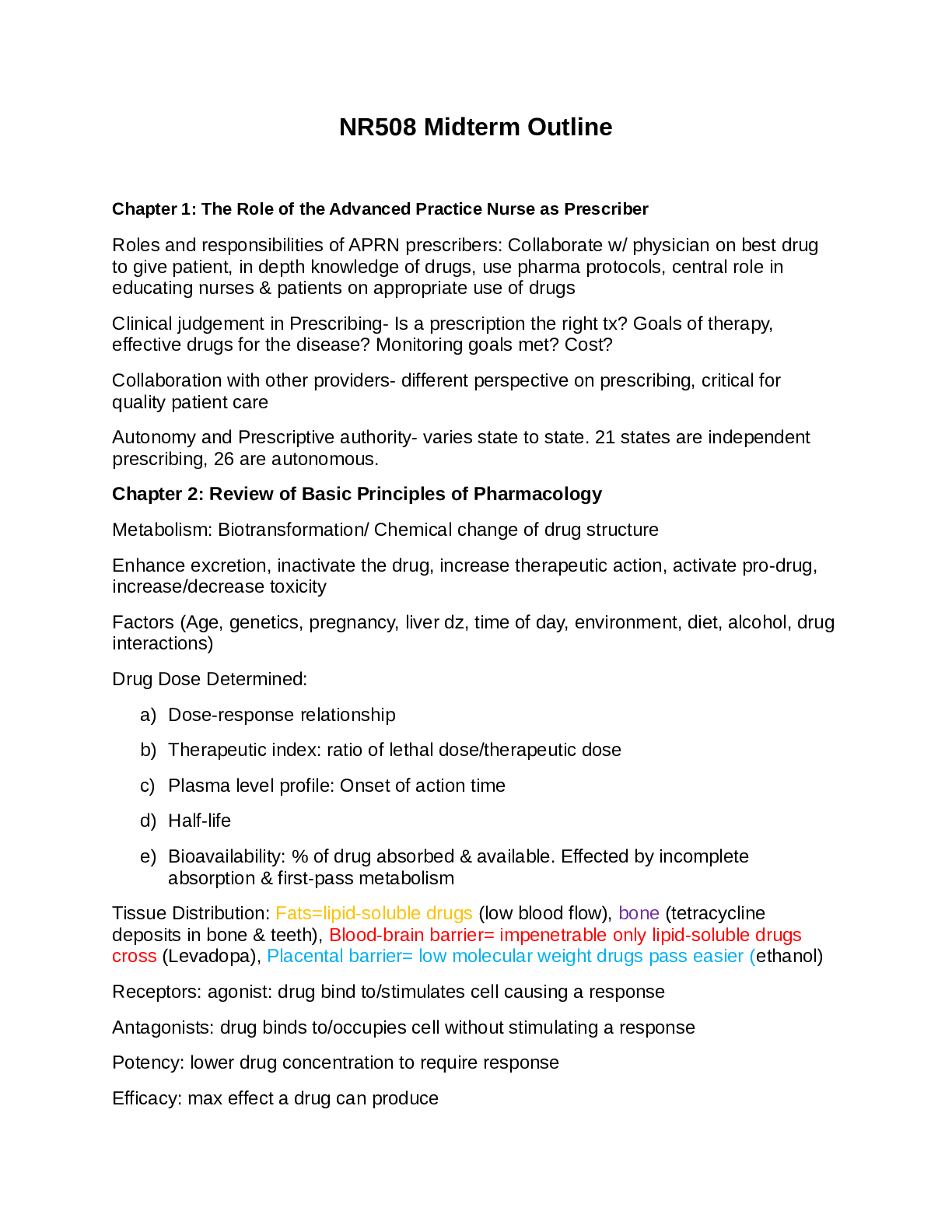
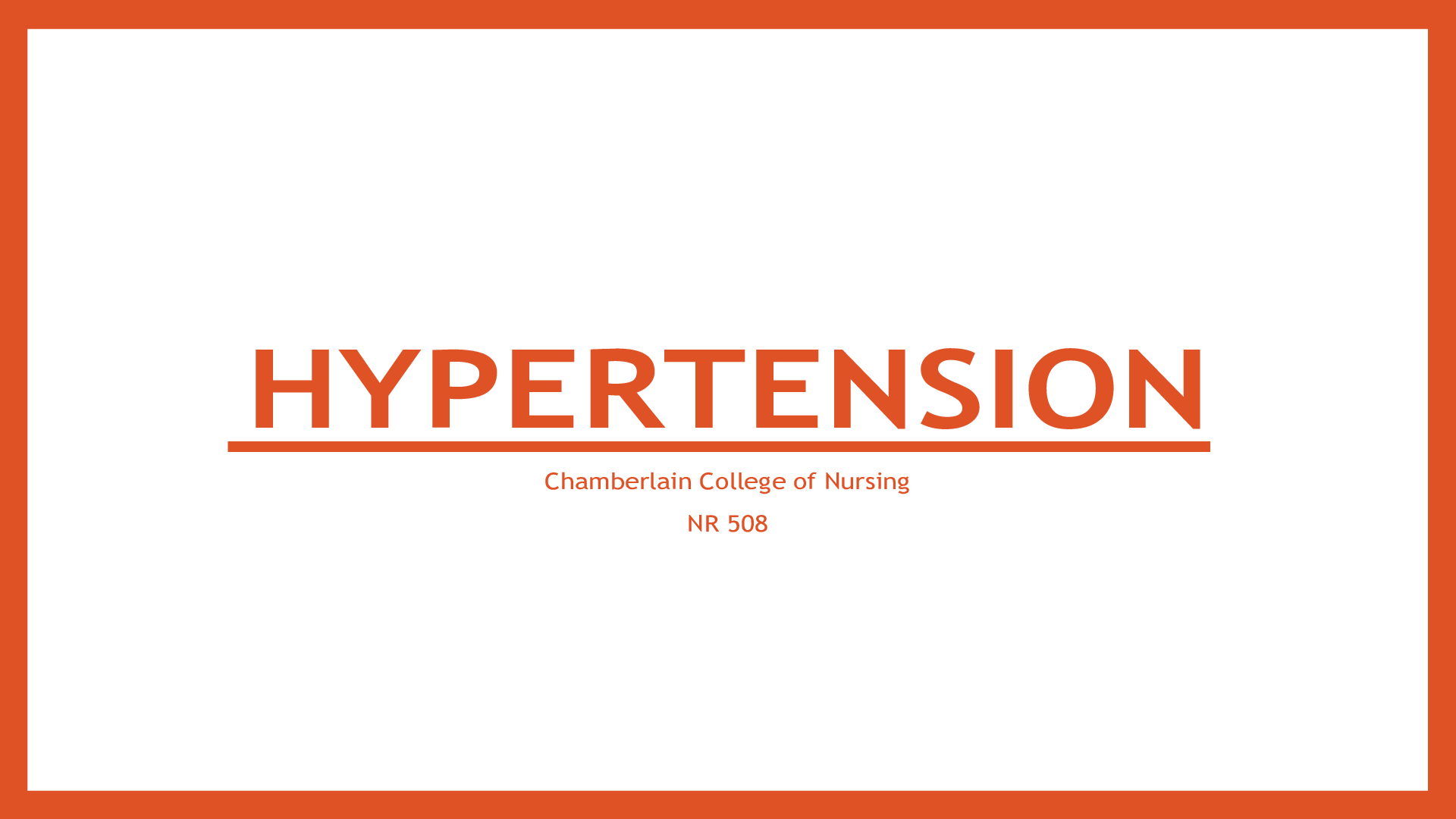
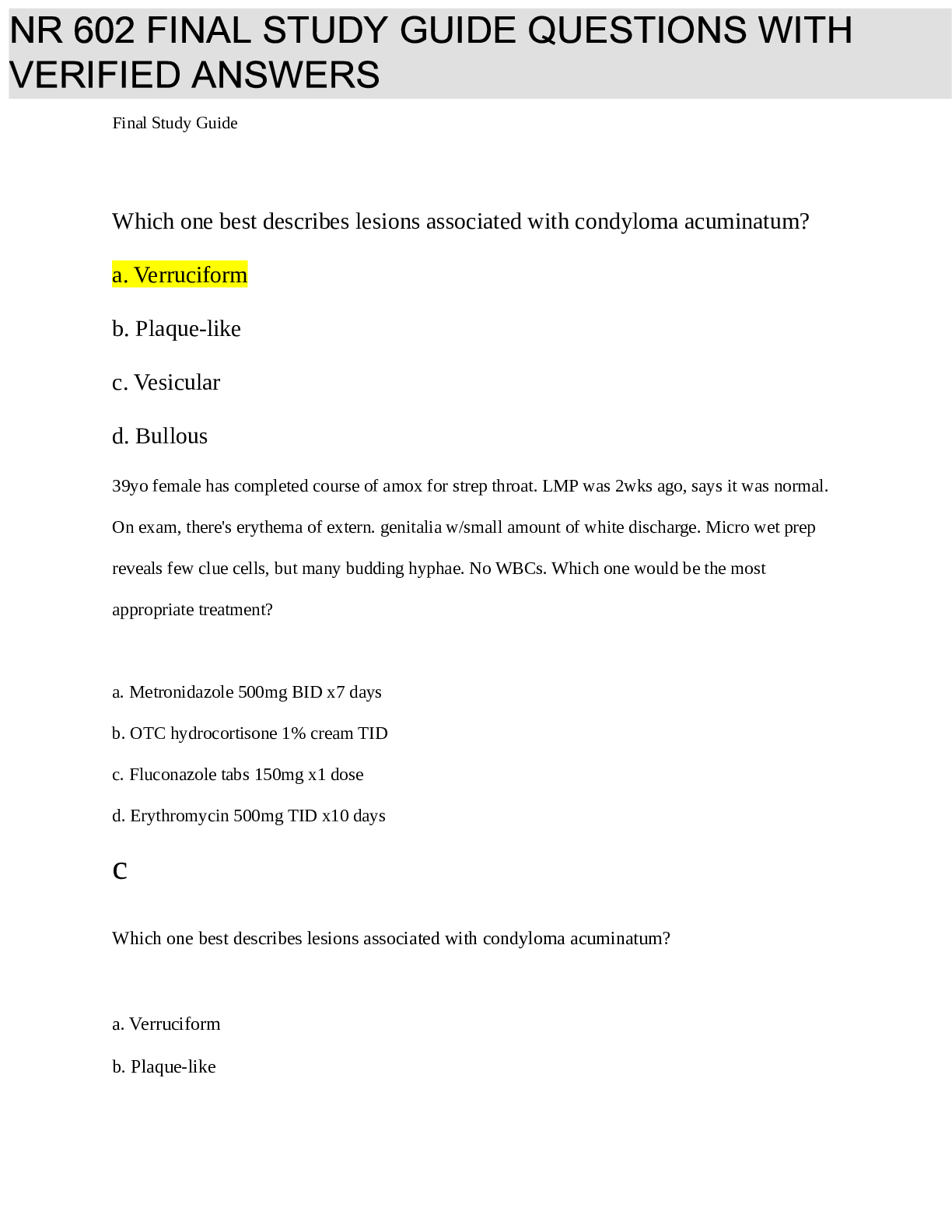
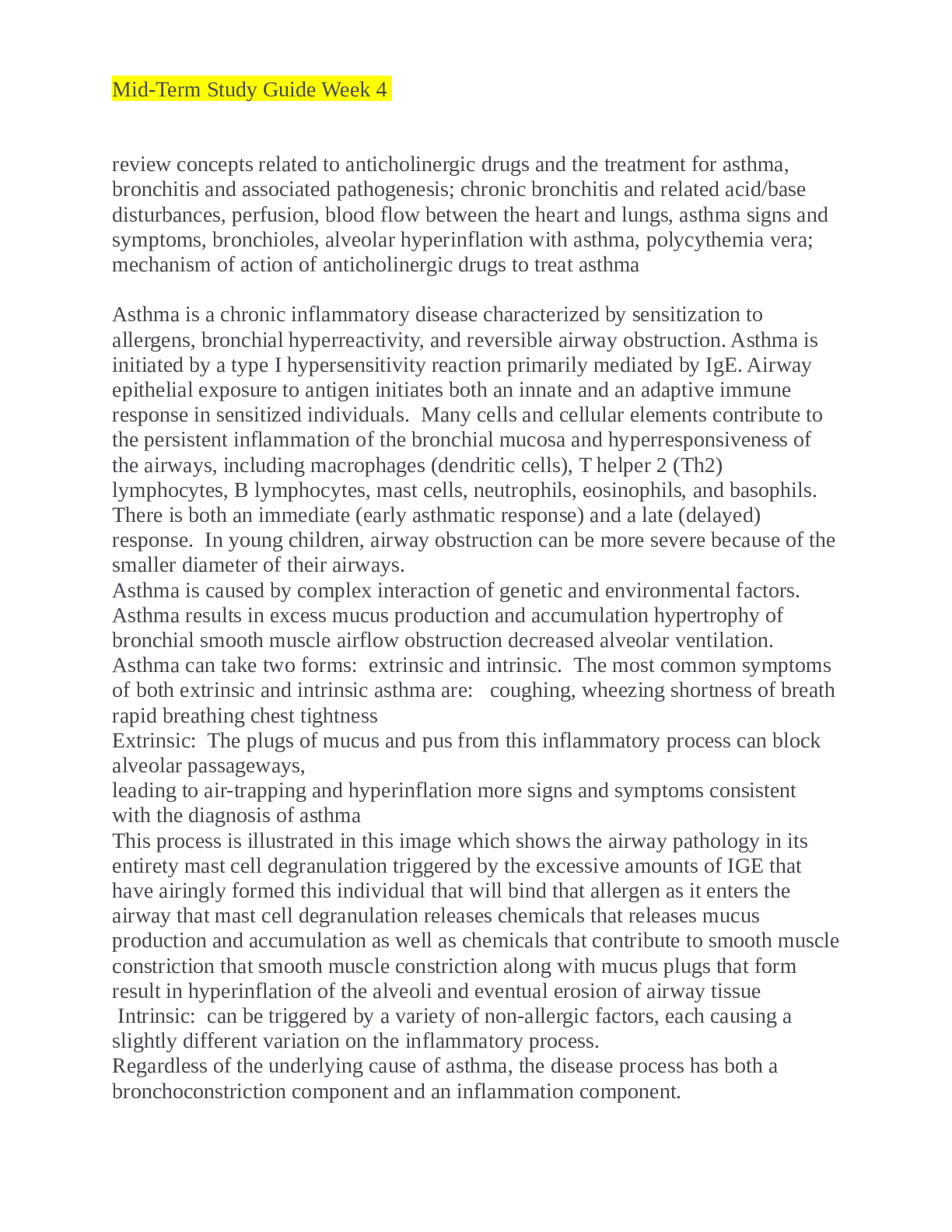
.png)
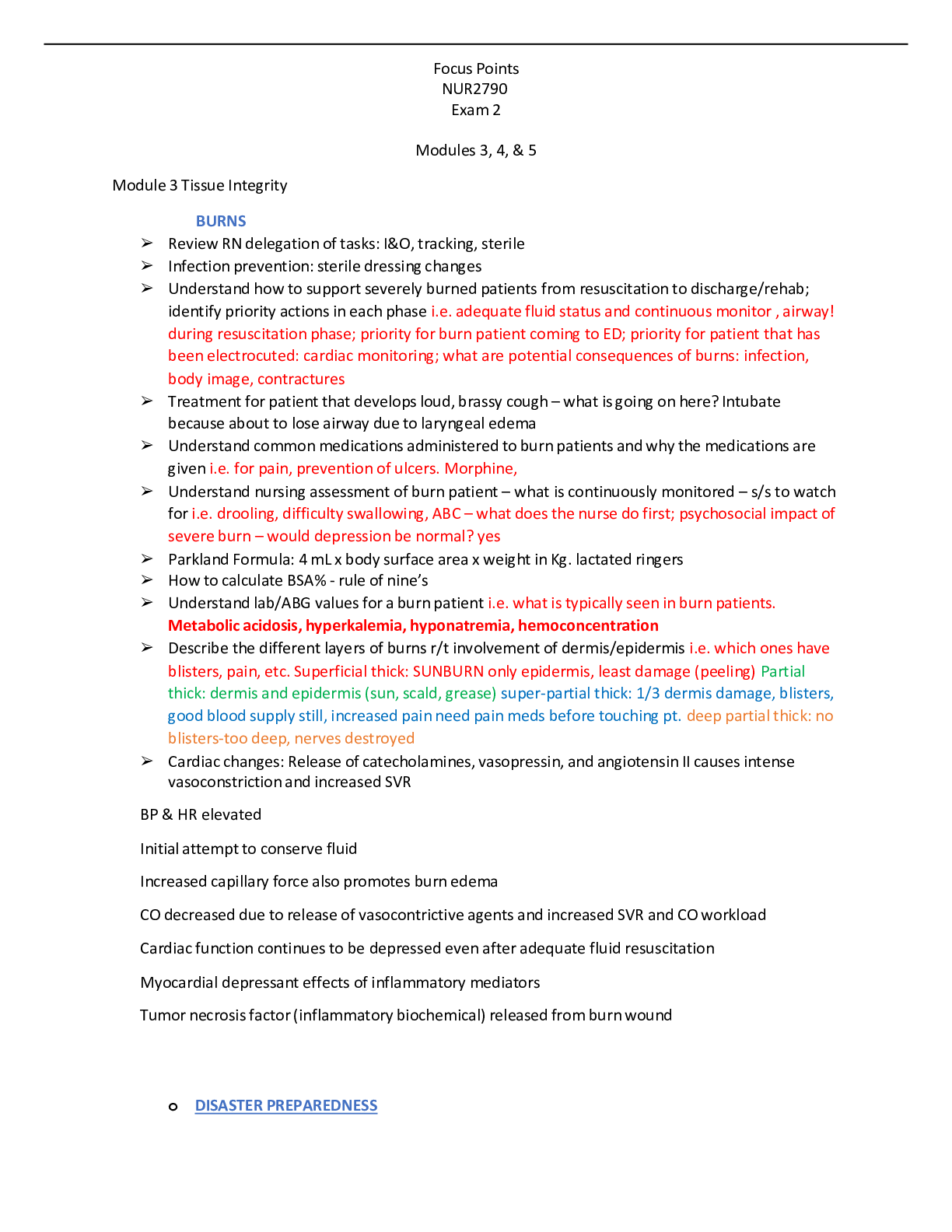



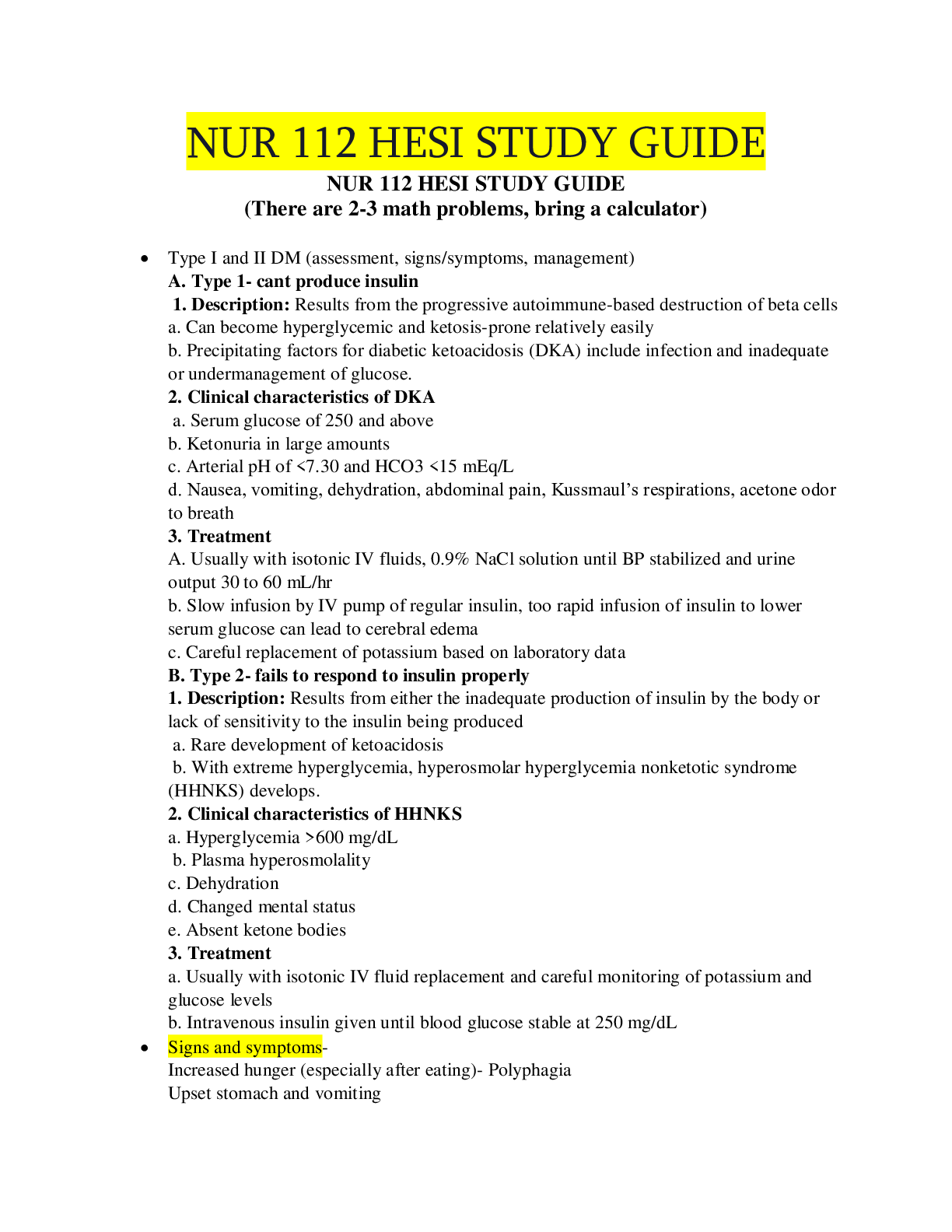


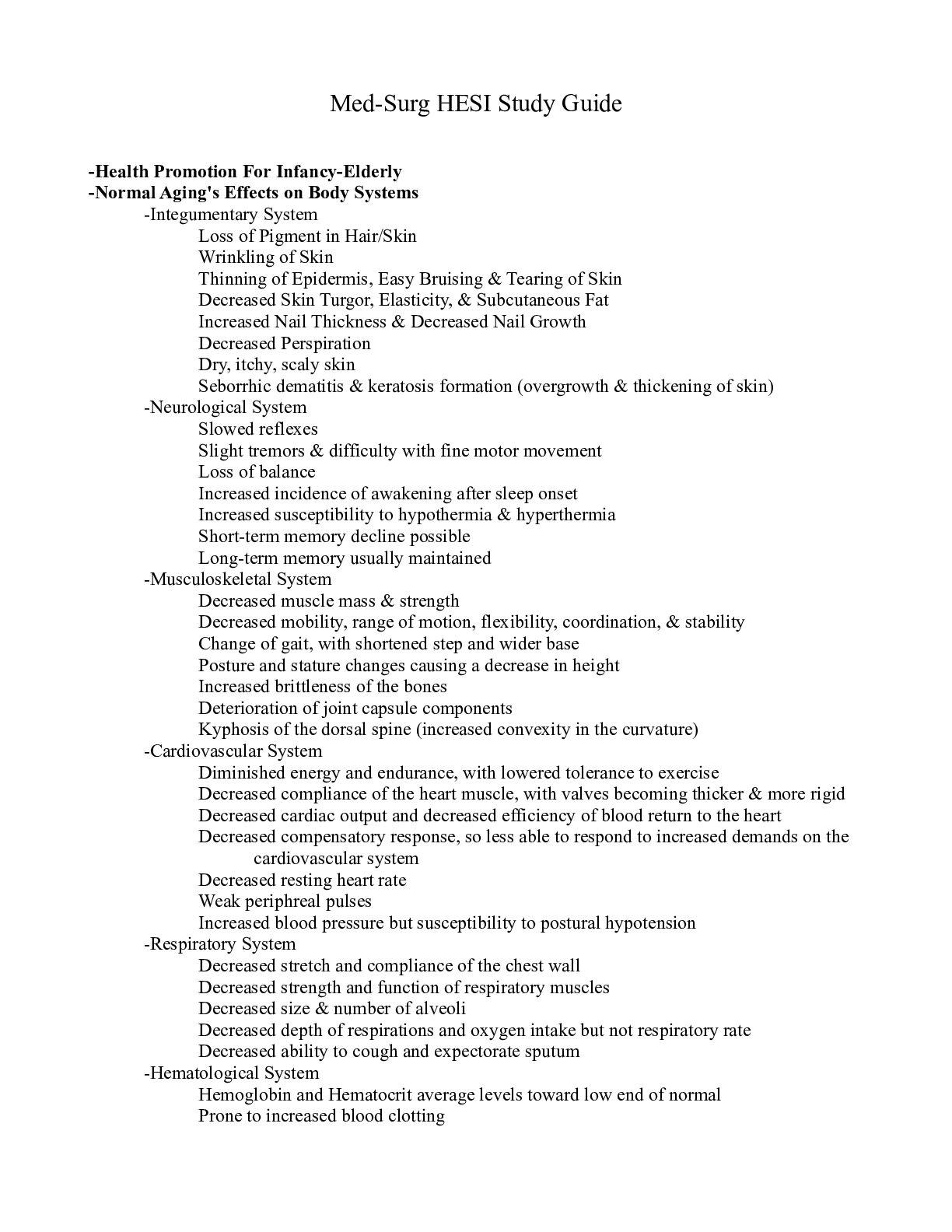
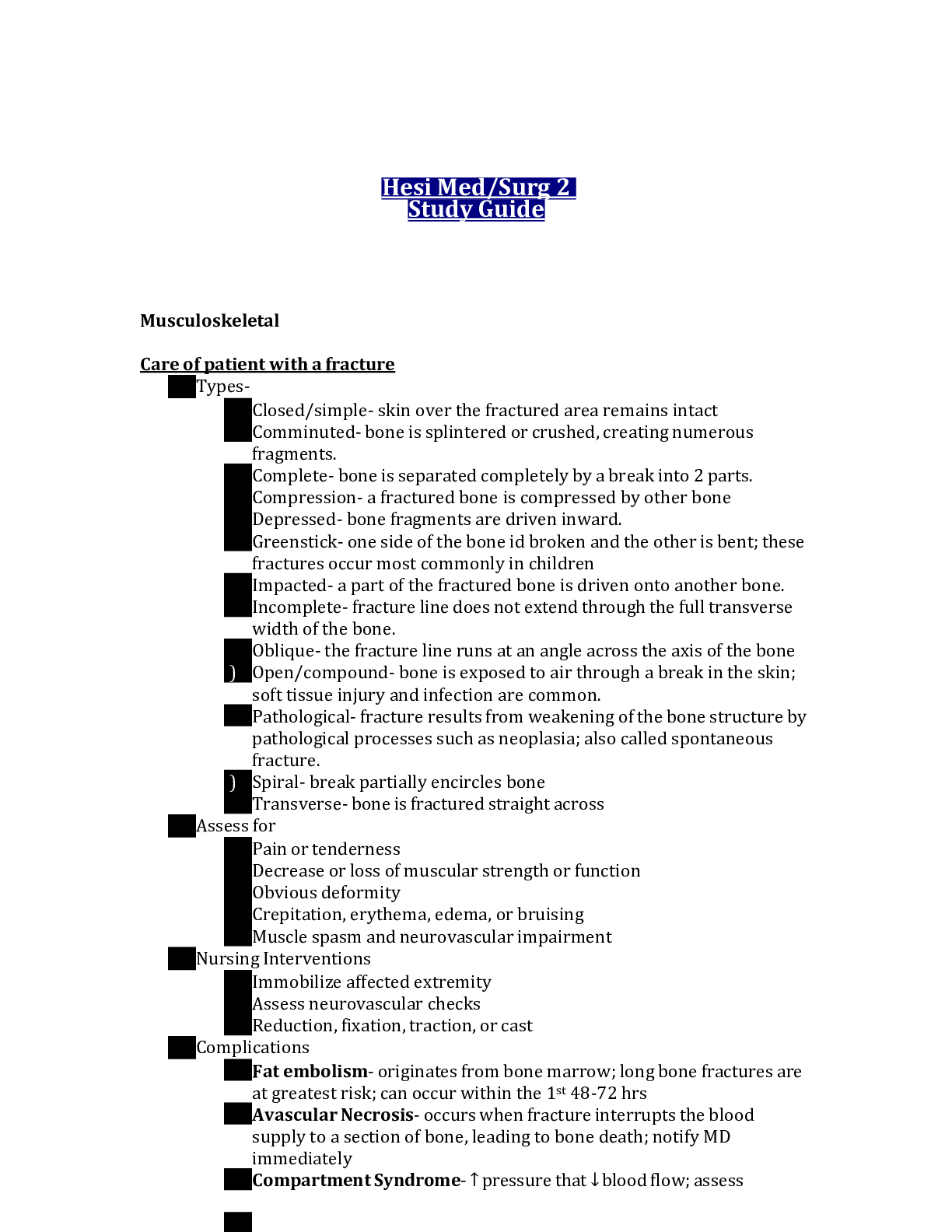
.png)
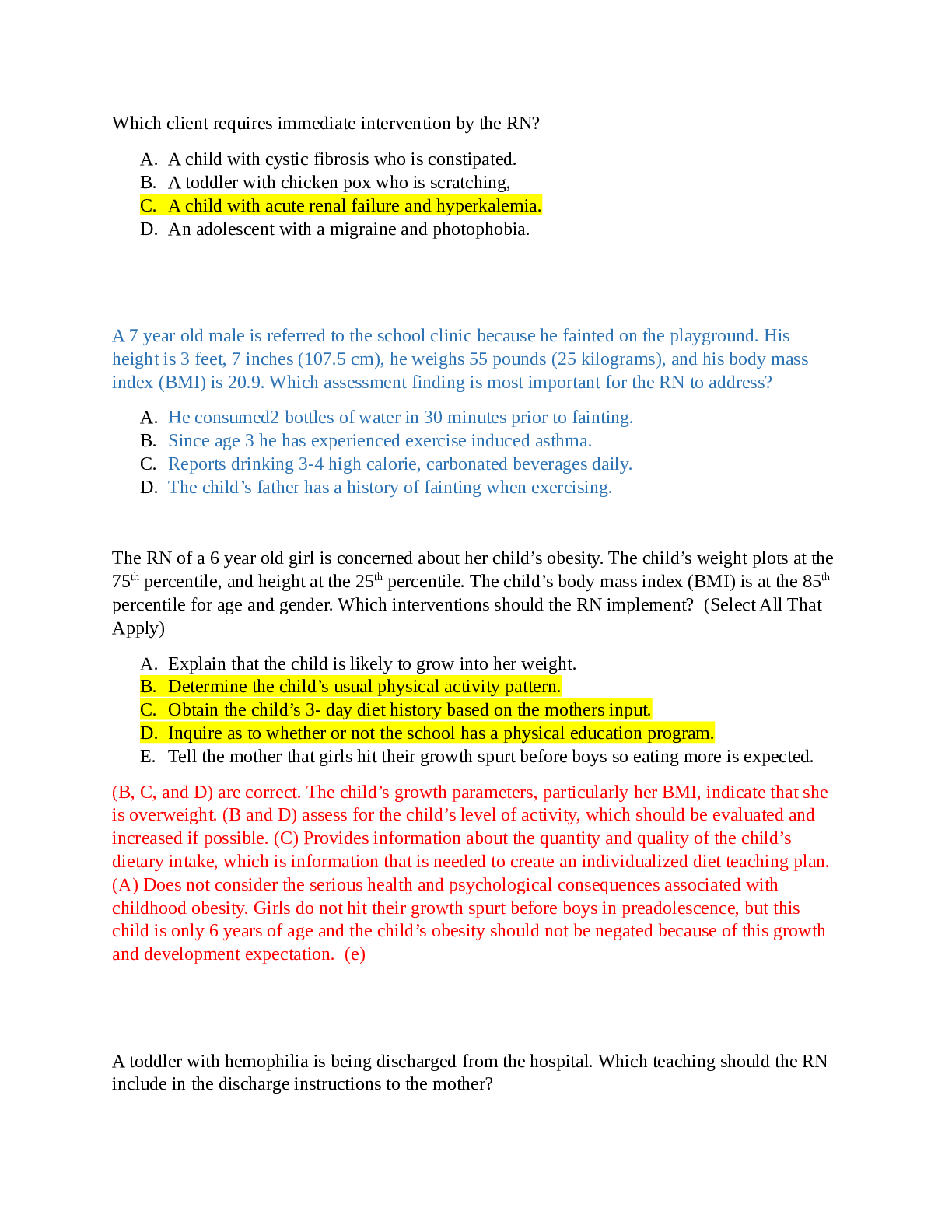

 (1).png)


